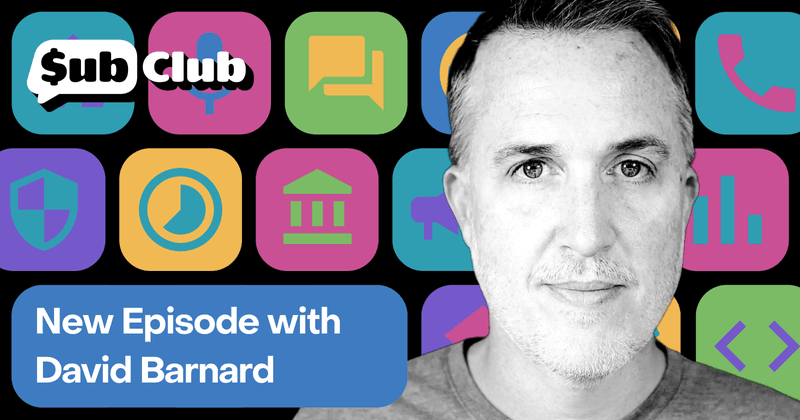“You have so little time to capture somebody’s attention” — David Barnard, Weather Up
The interviewer becomes the interviewee as Charlie Chapman talks to David about lessons from a lackluster launch.

In subscription app development, failure is not only an option — it’s inevitable.
Just ask David Barnard, whose recent Weather Up 3.0 launch didn’t quite go to plan. Due to a few missteps (and some unforeseen circumstances), the launch was much smaller and less successful than David originally hoped. But he learned some valuable lessons.
Ship, ship, SHIP
These days, with so much competition and noise in the app stores, it can be tempting to save up a bunch of new app features and release them all at once. But as David points out, this is a mistake: “The subscription business model allows you to accrue value over time and compound it, [whereas] the old model of paid updates and paid apps didn’t allow you to do that. So don’t hold off on shipping. That was the mistake I made for the last four years, getting trapped in that old mindset that did work in the past for me but no longer works in the same way.”
With subscription apps, it’s much better to release smaller, incremental updates. A continuous release cycle keeps your app relevant, gives your existing users enduring value, and tells current and potential customers that your app is constantly improving.
Don’t put all your eggs in one basket
Another reason not to save up features for a big launch? Sometimes your launch will get drowned out by other industry news. David put in a ton of effort building up to the Weather Up 3.0 launch. He set up an announcement on his website, reached out to several of his contacts in the press… everything was set for a great release. And what happened on launch day? Apple announced major changes to the App Store in the EU in response to the DMA — everyone was so distracted by this breaking news story that the news about the latest version of Weather Up got lost. The news cycle is unpredictable, so trying to make a big media splash to promote a launch may not always work.
📚 Further reading: For more tips, check out our how to launch an app guide.
If at first you don’t succeed…
But it isn’t all bad news! David has been doing this for a long time, and part of why he’s been so successful is that he learns from his mistakes. This time around, David used RevenueCat Paywalls to set up a custom paywall for his app and ran experiments to see how conversions differed for users who saw the annual plan selected by default versus those who saw the monthly plan by default. “Of the people who saw monthly as the default, 1100 stuck with monthly and only 100 switched to annual,” he said. “10% more people converted when they saw the monthly plan by default.”
The price isn’t (quite) right
David also learned a valuable lesson about the importance of value-based pricing. After launching 3.0, he discovered that the $40/year price for the Weather Up annual plan wasn’t performing well. Some users pointed out that similar weather apps (some with even more robust features) cost less than Weather Up. “I priced based on things that I knew and based on my thinking of the value of Weather Up and my costs in servicing [the app], not on the customer-perceived value of Weather Up,” he said.
But his biggest regret with this launch wasn’t the $40/year annual plan price — it’s that he didn’t offer a launch-day sale. According to David, “If you’re going to do a big, attention-grabbing thing, do it with some kind of discount (25% off, 50% off, whatever).” If you get any media attention from your app, users will see an attractive sale price that could drive considerable conversions.
Just keep swinging
So what’s the moral of the story? If you’re planning a new feature release or even a brand-new app launch, remember to keep your expectations in check. No matter how much you prepare, sometimes your strategy won’t go to plan or circumstances beyond your control will throw a wrench in things. The important thing is to learn from what went wrong so you can improve the next time around.
And if you’ve got an interesting story about a “failure” you’ve been through, talk about it! Sharing these stories with the community helps everyone learn and grow.
You might also like
- Blog post
Modeling attribution on iOS: what works, what doesn’t, and how to choose
How to navigate the messy world of SKAN, AEM, and probabilistic attribution — plus two practical frameworks to get a clearer picture of campaign performance.
- Blog post
Your sprints must pay for themselves: Dan Layfield’s product advice
What’s worth building? Dan Layfield shares a 3-bucket framework to help app teams prioritize features, fix churn, and ship faster.
- Blog post
Is monetization hurting your app’s user experience?
Don’t trade short-term revenue for long-term trust. How ethical UX can still drive effective monetization.

